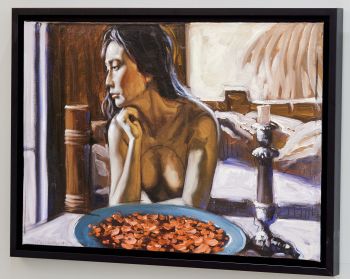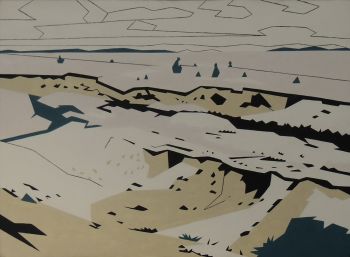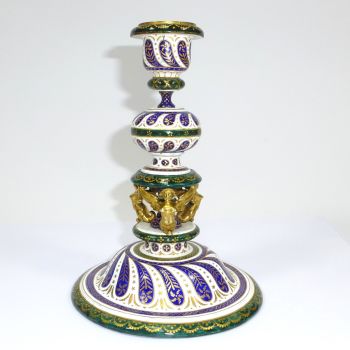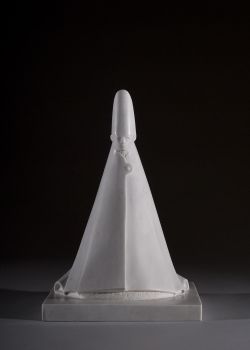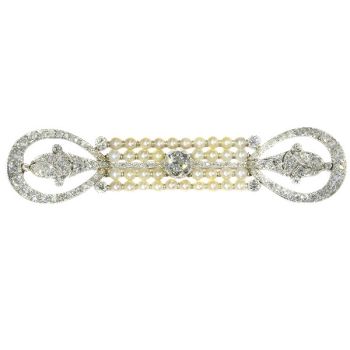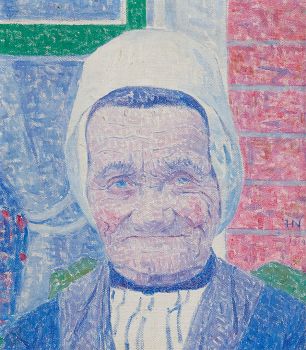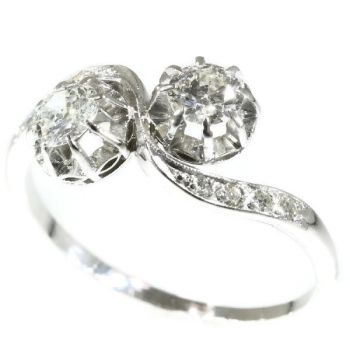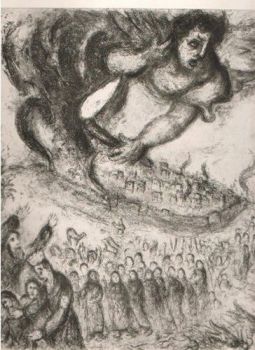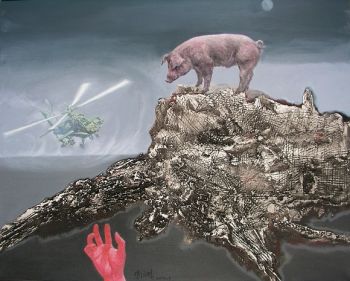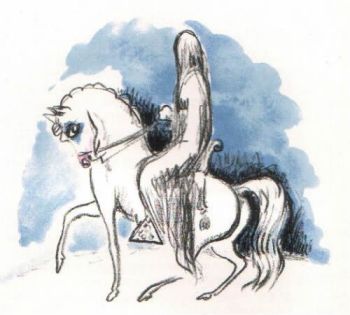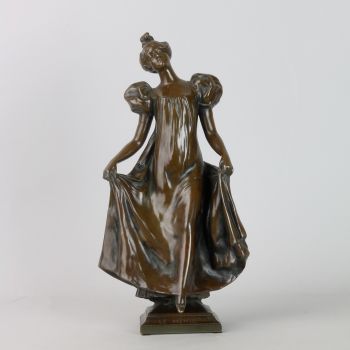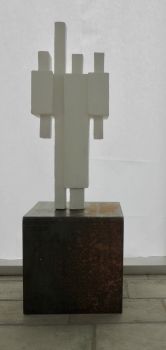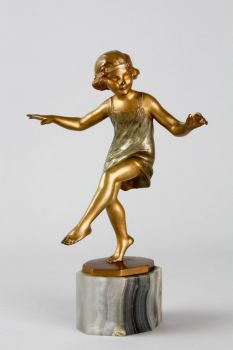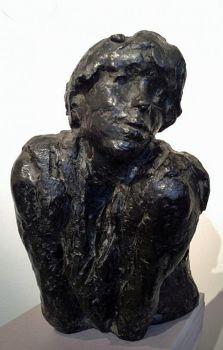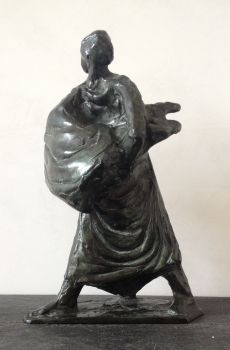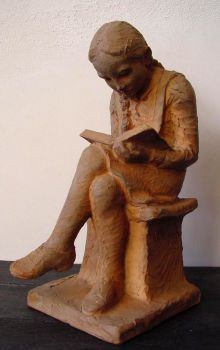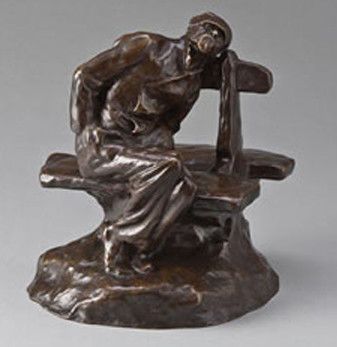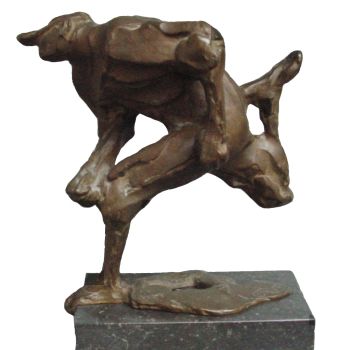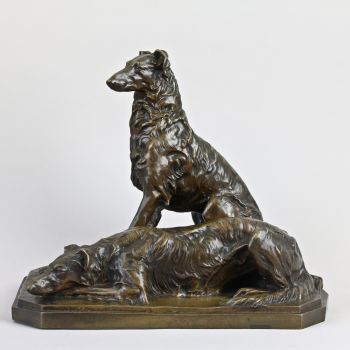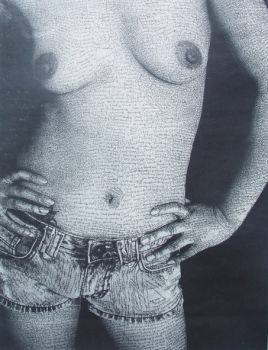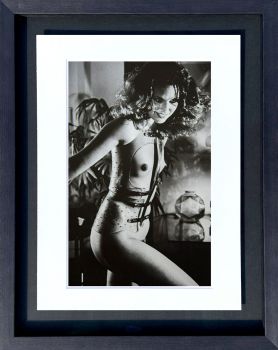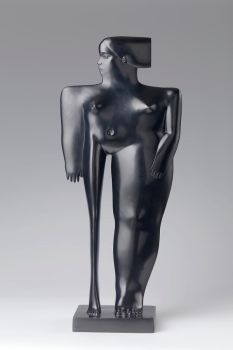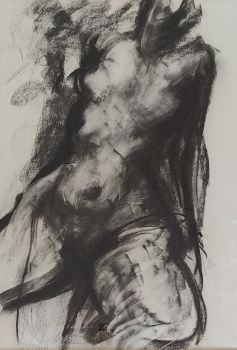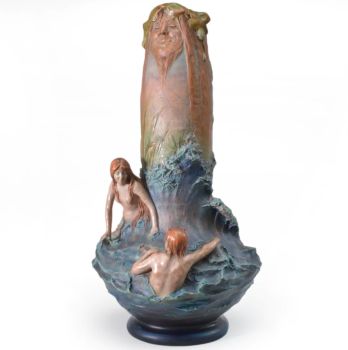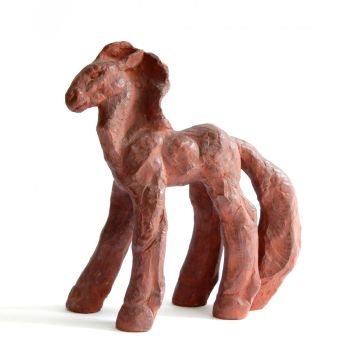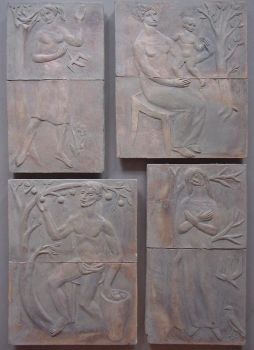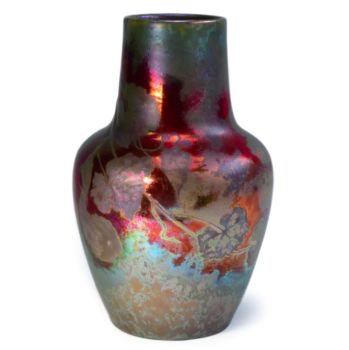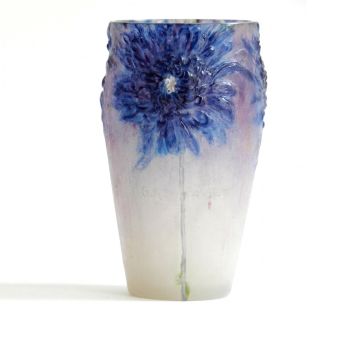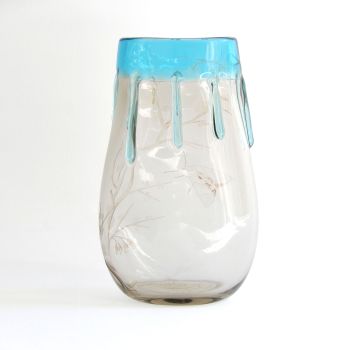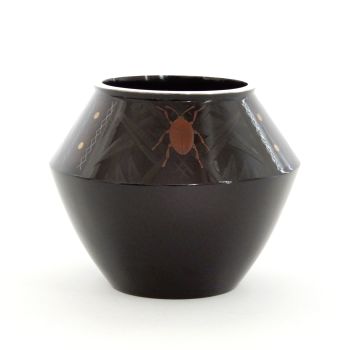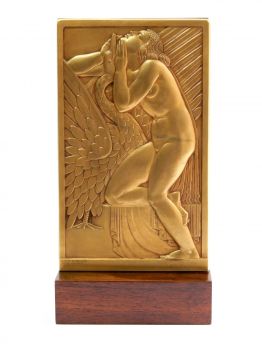Reclining nude 1941 - 1945
Emile Gilioli
TerracottaCeramic
8 ⨯ 23 ⨯ 9 cm
ConditionGood
Price on request
Dille Art
- About the artwork
About this piece
Remarkable and rare work by the famous sculptor Emile Gilioli (Fr.1911-1977).
This is an early piece that he created during the war years while he was forced to stay in Grenoble. During this period, he made several terracotta nudes like this one, always using the same model.
In 2006, several works were auctioned from the collection of Madame G. Charlon from Grenoble. Unfortunately, it is not known if she owned them all this time.
I have had this reclining nude in my home for several months now, and it moves me deeply, it has a kind of tenderness. I think it’s the way the woman lies there, completely relaxed yet also vulnerable.
Gilioli signed the piece on one of the legs.
Whether the legs are intended to look like this, I cannot say with certainty, but I suspect they are. Also because of the composition. However, this cannot be definitively confirmed.
Biography:
Émile Gilioli (1911-1977) was a French sculptor, known for his lyrical abstract style and as a prominent figure of the post-war École de Paris.
Born on June 10, 1911, in Paris, Gilioli grew up in a family of Italian shoemakers. After the First World War, the family moved to Nice, where he attended the École des Arts Décoratifs. There, he was influenced by artists such as Marie Raymond.
During the Second World War, Gilioli was stationed in Grenoble, where he became acquainted with curator Andry Farcy, who introduced him to Cubism. After the war, he settled in Saint-Martin-de-la-Cluze, where he maintained his studio and was influenced by the French Resistance movement.
In 1947, Gilioli exhibited at the Salon des Réalités Nouvelles in Paris, a platform for abstract art. He also participated in the first Salon de la Jeune Sculpture in 1949, alongside artists such as Emmanuel Auricoste and Étienne Hajdu.
Gilioli's work is characterized by geometric shapes and clean lines, often with a smooth finish reminiscent of polished pebbles. His sculptures reflect a pursuit of pure forms and rhythm in space, using materials such as marble, granite, and bronze.
Some of Gilioli's notable works include monuments commemorating the Second World War, such as the Monument for the Fallen in Voreppe (1946) and the Monument on the Plateau des Glières (1973).
His works are part of the collections of museums such as the Centre Georges-Pompidou in Paris and the Tate Gallery in London.
Gilioli passed away on January 19, 1977, in Paris. In his memory, his studio in Saint-Martin-de-la-Cluze was transformed into a museum and library, housing a permanent exhibition of his work.
His contributions to abstract sculpture and his unique approach to form and space remain influential in the art world.
Literature:
- Valérie-Anne Sircoulomb-Müller: "L'œuvre sculpté d'Émile Gilioli : catalogue raisonné", 1995
- Lydia Harambourg; "Émile Gilioli: la rigueur et le rêve", 2004
Measurements:
Length: 23 cm (9,06")
Height: 8,5 cm (3,35")
Depth: 9 cm (3,54")
base:
Length: 28 cm (11,02")
Width: 18 cm (7,09")
Height: 2,5 cm (98")
Period:
1941-1945
Origin:
France - About the artist
Émile Gilioli (1911–1977) was a celebrated French painter and sculptor, recognized as a pivotal figure in the post-war abstract art movement. His work is celebrated for its clean lines, harmonious forms, and a profound exploration of geometric and organic abstraction. Gilioli’s contributions to modern art have left an indelible mark on the cultural landscape of the 20th century.
Born in Paris into a family of Italian origins, Gilioli grew up with an early appreciation for art and craftsmanship. After training as a sculptor in Paris, he developed a modernist approach that drew from a wide array of influences, including Cubism, Constructivism, and the emerging trends of abstract art. His artistic career, however, was interrupted by the Second World War, during which he was mobilized near Grenoble.
Despite the challenges of wartime, Gilioli found solace and inspiration in his frequent visits to the Grenoble Museum of Fine Arts, where he engaged deeply with classical and modern works. This period marked a turning point in his artistic vision, as he began to refine his abstract language and experiment with innovative forms and materials.
In the 1950s, Gilioli emerged as one of the leading voices in French abstraction. His sculptures, characterized by their elegant simplicity and poetic resonance, often employed materials such as marble, bronze, and stone. These works, while minimalist in appearance, exude a sense of movement, balance, and spiritual depth. Many of his pieces are monumental in scale, gracing public spaces and museums throughout Europe.
Gilioli’s artistic philosophy emphasized the interplay between space, light, and form. His work often reflected a deep connection to the human condition and a desire to transcend the material world through art. As a result, his sculptures resonate with timeless beauty and emotional intensity, making them both universally accessible and deeply personal.
Throughout his career, Émile Gilioli received numerous accolades, and his work was exhibited widely, cementing his status as a master of mid-century abstraction. Today, his sculptures can be found in prestigious collections and public installations, continuing to inspire and captivate audiences worldwide. His legacy is that of an artist who transformed the language of abstraction into a profound expression of humanity and modernity.
Are you interested in buying this artwork?
Artwork details
Related artworks
Jean-François Rauzier
Eglise Sant Pau - Limited edition of 8 2011
Prix sur demandeVilla del Arte Galleries
 Sélectionné par
Sélectionné parGallerease Magazine
1 - 4 / 24Klaas II Mobach
Hanna Mobach, daughter of the sculptor Klaas Mobach, reading1950 - 1970
Prix sur demandeKunsthandel Pygmalion
1 - 4 / 24- 1 - 4 / 24
Klaas II Mobach
Hanna Mobach, daughter of the sculptor Klaas Mobach, reading1950 - 1970
Prix sur demandeKunsthandel Pygmalion
1 - 4 / 24Artiste Inconnu
Japanese art deco lacquervase with Scarab beetle motif1920 - 1950
Prix sur demandeDille Art
1 - 4 / 12







